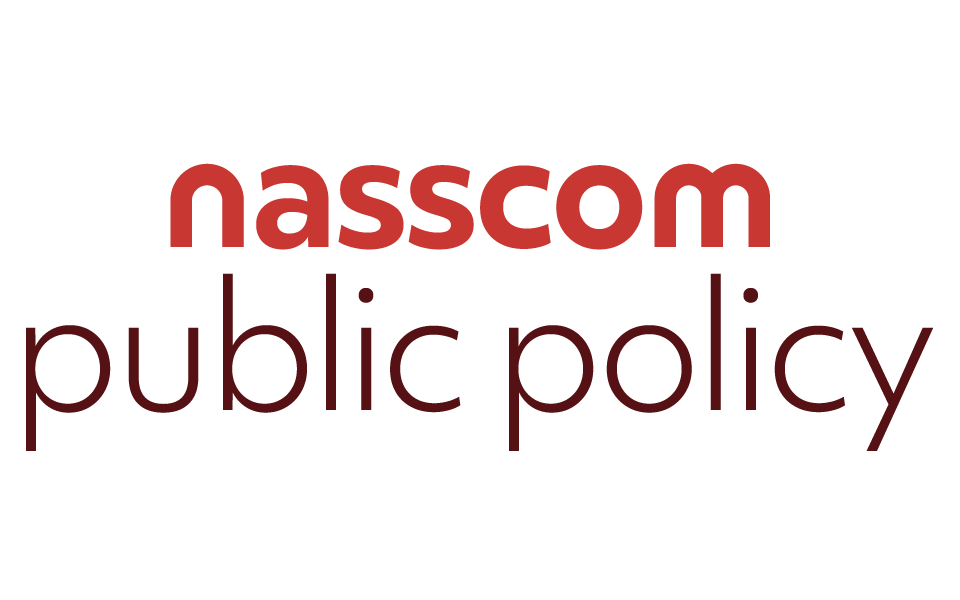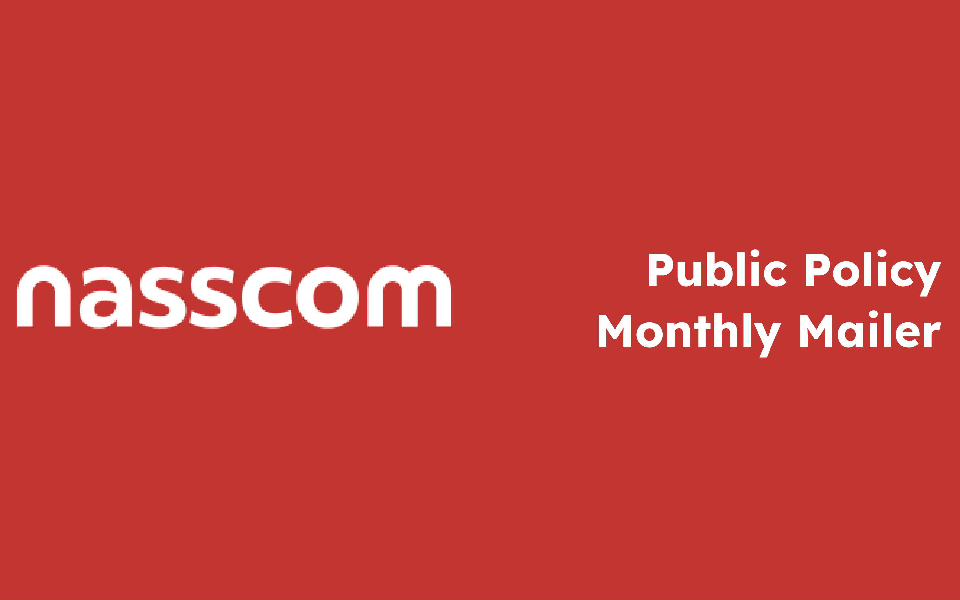The Directorate General of Civil Aviation (DGCA) released the draft Unmanned Aircraft System Rules, 2020 (UAS Rules) on 2 June 2020. Public consultation on the UAS Rules is open till 3 July 2020.
NASSCOM solicits member inputs on the UAS Rules. Please send your inputs to dagarwal[at]nasscom[dot]in and komal[at]nasscom[dot]in latest by 22 June 2020 to enable NASSCOM to make a timely submission to the DGCA.
The post below gives an overview and a brief analysis of the UAS Rules.
Background and Context:
The existing rules applicable to remotely piloted aircraft system (RPAS), a sub-set of unmanned aircraft system (UAS), are the Requirements for Operation of Civil RPAS (RoCR) issued on 27 August 2018. The RoCR inter alia stipulates terms and conditions relating to the issue of Unique Identification Number (UIN) and Unmanned Aircraft Operator Permit (UAOP), security/safety, remote pilot training, RPAS maintenance, equipment, operating and minimum manufacturing standards. Significantly, the RoCR restricts RPA operations to Visual Line of Sight (VLOS).
Subsequently, the Government unveiled the draft Drone Policy 2.0 on 15 January 2019. While a copy of the draft policy was not released in the public domain, the draft Drone Policy 2.0 hinted at permitting autonomous operations, development of drone ports and UAS Traffic Management, and extending operations beyond VLOS.
The DGCA released the draft UAS Rules on 2 June 2020 and a Public Notice for voluntary disclosure of civil drones and drone operators (dated 8 June 2020).
Salient features of the UAS Rules:
Conditions related to import/manufacture and maintenance of UAS (under Part IV of the UAS Rules)
(i) Prior authorisation required by importer, manufacturer, trader, owner and operator of UAS – An importer, manufacturer, trader, owner and operator of UAS must apply for prior authorisation from DGCA which is valid initially for five years. The authorisation may be renewed for a period of another five years at a time. If the authorisation request is granted, the DGCA will issue a Unique Authorisation Number (UAN).
(ii) Eligibility Conditions for Authorisation– The substantial ownership and effective control in case of authorisation of a company/body corporate/firm etc. shall vest in Indian nationals.
(iii) Import clearance & Certificate of Manufacture required for import of UAS– An Authorised UAS Importer must apply for import clearance to the DGCA and obtain a Certificate of Manufacture (as specified in Schedule II) in order to import a UAS or its part/component.
(iv) Certificate of Manufacture for UAS– A Certificate of Manufacture is required to import or manufacture a UAS in India. For this purpose, an applicant must submit the UAS and design documents to the testing laboratories or organisations allocated by the DGCA. The DGCA may issue a Certificate of Manufacture based on the test report and recommendations by the testing laboratories/organisations.
(v) Obligations on UAS Manufacturing Organisations– An organisation manufacturing a UAS or its part/component is subject to safety and inspection oversight by the DGCA, and must comply with DGCA’s requirements.
(vi) Obligations related to maintenance of UAS– Every manufacturer and importer of UAS in India must provide a maintenance manual as part of its mandatory sales documents, and also notify the DGCA if the manufacturer/importer establishes authorised maintenance centres. The owner and importer of UAS shall keep a record of maintenance as specified by DGCA.
Conditions related to Identification and Transfer of UAS (under Part V of the UAS Rules)
(vii) Requirement of Unique Identification Number (UIN)– A manufacturer/importer must register an unmanned aircraft (UA) and obtain a UIN from the DGCA.
(viii) Transfer of UAS to authorised persons with prior approval of DGCA– A UAS may be sold or leased or transferred in any other manner only to persons with a valid UAN, and with prior approval of DGCA.
Conditions related to operation of UAS (under Part VI of the UAS Rules)
(ix) Requirement to obtain UAS Operator Permit– A UAS Operator Permit is required to operate a UAS except a Nano Class. The permit shall be valid for five years and may be renewed for upto five years at a time.
(x) Permission for each flight– For every flight of a UA, permission must be obtained through the online platform (‘Digital Sky’) in the manner specified by the DGCA. After each flight, the UAS operator is required to furnish flight log details through Digital Sky.
(xi) Requirement of UAS Pilot Licence– To operate a UA in India except the Nan and Micro Classes, a Qualified Remote Pilot (who meets the eligibility requirements under Schedule VII) shall apply for a UAS Pilot Licence. The UAS Pilot Licence shall be valid for five years and may be renewed for five years at a time. A person who wishes to become a Qualified Remote Pilot is required to undergo training at training organisations or institutes authorised by the DGCA.
(xii) Provisions related to photography from UA– A UA is permitted to capture imagery except in non-permissible area (specified in Schedule VIII) and after ensuring the privacy of an individual and their property.
(xiii) Prohibition on carriage of payload and dropping of articles– A UA shall not carry any payload, nor drop/project an article when in motion, except as specified by DGCA.
Drone Port (under Part VII of the UAS Rules)
(xiv) Establishment of drone port and drone corridors– Drone ports and drone corridors may be established in permitted areas. A drone port shall be used for shall be used for the arrival, departure, surface movement and associated maintenance or commercial activities of UA, provided it has been licensed, and authorised by the DGCA for temporary operation of UA. A drone port licence may be granted to a legal person provided they meet the eligibility criteria as prescribed by the DGCA; the licence shall be valid initially for five years and may be renewed for five years at a time. A drone port authorisation for temporary operation of UA may be granted for a maximum period of three months.
UAS Traffic Management (UTM) (under Part VIII of the UAS Rules)
(xv) Licence for UTM service: The Central government may establish a UAS Traffic Management (UTM) system in the Indian airspace, and grant a licence to a person for providing UTM service. The UTM Service Provider Licence may be renewed as per the application procedure specified in Schedule X.
(xvi) UTM Personnel Licence– Additionally, a person who wishes to engage in the provision of UTM service shall obtain a UTM Personnel Licence which is valid initially for five years, and may be renewed for five years at a time.
(xvii) Training requirements for UTM personnel– One of the requirements for UTM personnel is to undergo training at a training institute authorised by DGCA. A training institute is authorised for five years initially and such authorisation may be renewed for five years at a time.
General (under Part IX of the UAS Rules)
(xviii) Mandatory insurance requirement– A UA may be operated in India only if a valid third-party insurance policy covers liability in case of a mishap involving such UA and causing death or bodily injury to any person or damage to property.
(xix) Inapplicability of certain rules to model RPAS and autonomous UAS– Certain UAS Rules (as specified) shall not apply to model RPAS and autonomous UAS.
(xx) Broad powers of inspection and surveillance by the DGCA– The DGCA has sweeping powers to inspect the UAS, UAS manufacturing, storage, maintenance facility, UTM facility or any other related facility, and carry out surveillance.
(xxi) Absence of actual fault or privity as a defence for contravention of UAS Rules– The penalties for contravention of the UAS Rules and any other relevant rule are prescribed in Schedule XII. The owner, hirer, operator, remote pilot of a UAS may avail of the defence that the alleged contravention took place without his actual fault or privity.
Brief Analysis:
The UAS Rules have been a long time coming given that the draft Drone Policy 2.0 was released in January 2019. The UAS Rules allow UA to operate which will be a significant change from the existing RoCR (this was contemplated in draft Drone Policy 2.0) and therefore, a step in the right direction. However, other recommendations of the draft Drone Policy 2.0 such as beyond visual line of sight (BVLOS) operations and carriage of payload are not envisaged in the UAS Rules.
The Indian government too understands the potential of drones in India given that Indian law enforcement agencies have deployed drones for enforcing social distancing measures and disinfection purposes during the COVID-19 pandemic. In fact, 13 companies in India which include online delivery companies such as Swiggy and Zomato have recently received approval from the DGCA to test BVLOS operations using drones. It is unclear whether such operations will be permitted under the UAS Rules once they are finalised. It is reported that separate rules for e-commerce operations or delivery of medical supplies by drones may take atleast a year.
Our preliminary view is that under the UAS Rules, there are multiple authorisations which any person dealing in UAS will have to obtain, right from UAN to Certificate of Manufacture to UIN and UAS Operator Permit (for operating the UAS). NASSCOM is analysing the UAS Rules in detail. Kindly email your inputs to dagarwal[at]nasscom[dot]in and komal[at]nasscom[dot]in by 22 June 2020.












